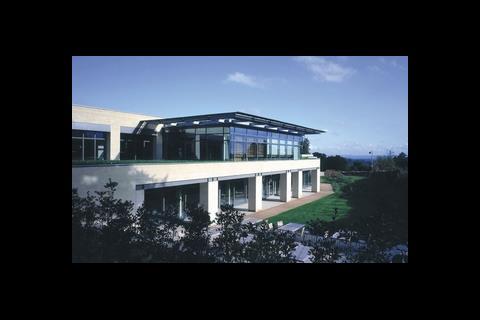Coaxed to perform more sustainably, existing buildings can make a much bigger contribution towards saving the planet than new construction, says Fiona Roche.
Buildings consume vast amounts of energy and water and are responsible for the generation of greenhouse gases, including about 40% of the UK’s total carbon dioxide emissions. It is generally accepted that, in the fight to arrest climate change and create a more sustainable future, action must be taken to address some of the more negative impacts of the built environment.
What is less clear is why efforts to promote sustainability in buildings have tended to focus on how they are designed and constructed rather than how they perform in the operational phase, as this is usually when they will have the largest and most sustained impact.
Energy savings, productivity increases, water conservation, reduction in waste streams and other sustainable benefits in existing buildings far outweigh the potential benefits from sustainable new construction. When it comes to mitigating and adapting to the effects of climate change and reducing the consumption of fossil fuels, the way buildings function and how they are managed and maintained is a key consideration.
This is the responsibility of the building manager, and in many ways the profession has been working at the front line in the push for more sustainable buildings for some time.
Key aspects of a building manager’s job, such as improving efficiency and reducing costs, go hand in hand with sustainability objectives such as reducing energy and water consumption, maintenance and refurbishment to prolong building life, and waste management.
Businesses and organisations are under increasing pressure to improve the management of their premises and comply with their environmental and social responsibilities. The introduction of legislation has compelled changes in policy and practice, particularly in relation to energy and waste. Pressure also comes from the market, with stakeholders and consumers demanding improvements in the sustainability credentials not only of products or services provided but also of the company itself and its premises.
Part of everyday life
This combination of factors means sustainability has moved further up the agenda for most building managers and turned what was previously a relatively remote and unloved concept in to a fundamental part of every day life. Indeed, this link has grown stronger in recent years as a result of the increasing cost of commodities and services.
Consequently, the building manager already has a number of well-established tools readily available.
- Post occupancy evaluation (POE)
Details how well a building is performing and gauges occupant satisfaction. This can help identify problems with the building systems and help to improve the health and wellbeing of building users. Issues such as “rogue” energy consumption and the need for seasonal commissioning can be identified through POE.
- Building management systems
For monitoring building systems and assisting in the speedy identification of faults. This will assist in controlling costs and the reduction of consumption and waste. Monitoring energy and water use is a vital component of any reduction measures.
- Environmental management systems
Provides improvements in the environmental credentials of the building and reduction of energy and waste costs.
- Planned preventative maintenance
Keeps the building’s equipment and services in good working order to optimise efficiency and effectiveness. This will help to reduce energy and water consumption and spread the cost of maintenance.
Taking sustainability further
But what about the building manager who wants to go further? Given their role at the heart of the built environment, there is an ideal opportunity for this profession to be proactive and to lead the way in the delivery of greener buildings and infrastructure through sustainable selection, operation and management.
Building managers can make a real contribution at a global level by choosing to procure products and services in
a sustainable way
There are innovative ways for building managers to deal with the priorities of managing building stock, enabling cost savings while making significant steps toward improving the environmental performance of a building and reducing impacts at a local and global level.
They include:
- Continuous commissioning
This can be viewed as an extension of POE. It aims to deliver improved effectiveness and efficiency in the way a building operates and serves its users.
The process involves detailed assessment of feedback from operational staff, occupants of the building and data from the building management systems in order to identify areas of inefficiency or ineffectiveness, and draw up a list of priority remedial action.
The advantages of this approach can include reductions in energy, maintenance costs, environmental impact and improvements to occupant wellbeing. Awareness that the building is professionally managed using environmentally sound principles can also enhance an organisation’s environmental credentials.
- Sustainable procurement
Building managers can make a real contribution at a global level by choosing to procure products and services in a sustainable way.
From environmentally friendly cleaning products to sustainable timber, from fair trade catering to high efficiency boilers, the building manager has the ability to address some of the wider concerns of sustainability in a meaningful way.
While cost is always an issue, a carefully thought out and well-researched procurement policy can have a major impact at little or no additional expense.
- Energy performance certificates
The production of energy certificates for buildings is now a legal requirement and building managers should treat the certification process as an opportunity.
An aspiration to achieve a higher energy performance rating by the time the building is assessed again will produce a list of priority actions on energy management which will yield continual improvements and long-term energy and cost savings.
- Design stage involvement
Building managers are increasingly becoming involved in the earliest stages of the design of a building. As they have to deal with the building and its users for the long term, this makes great sense (see Figure 1).
When building managers are consulted at the earliest stages it may be possible to design out some levels of maintenance and other potential problems. This will have benefits in terms of cost savings as well as for the environment and the building users.
These measures and other increasingly sophisticated tools available should ensure a central role for the building manager in the rapidly expanding area of sustainable buildings.
Corporate responsibility, environmental accounting and carbon footprinting have become key words in the vocabulary of all sectors of business and within society as a whole. Given the importance of their function and the potential impacts of their actions, building managers have a vital role to play in the sustainability process by continuously seeking opportunities to develop and expand their contribution to a more sustainable future.
Original print headline - performing arts
Source
Building Sustainable Design
Postscript
Fiona Roche is sustainable and alternative technologies consultant with Buro Happold

























No comments yet